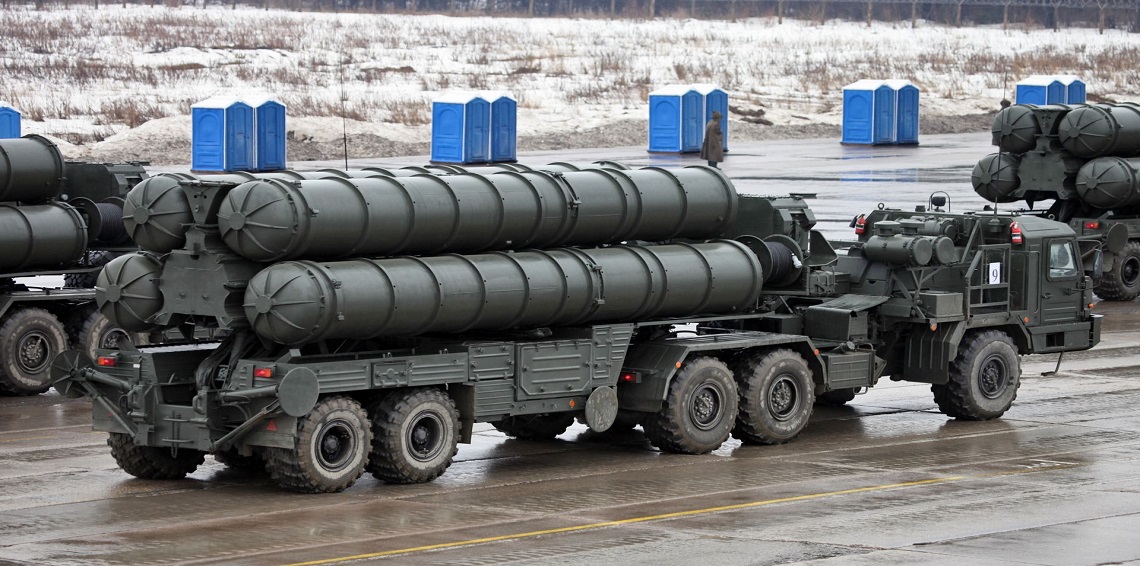India to Purchase 5 S400 Units from Russia
June 2, 2018 | Expert Insights

India’s awaited purchase of 5 S-400 Surface to Air Missile units from the Russian Federation is now in progress as the Defence Ministry has asked the apex Cabinet Committee for approval.
The 5.5 billion dollar deal is an anticipated boost to India’s declining military prowess.
Background
India has long maintained cordial relations with Russia since Independence through a non-aligned strategy. This neutral approach has been observed in contemporary times when India abstained from voting against Russia on the Crimean issue, while Russia supported India’s bid to join the Nuclear Supplier’s Group (NSG). Diplomatic ties are secondary to Russia’s pivotal role in India’s defence sector with the former providing 62% to Indian arms in the past 5 years.
The S400 (NATO call name SA 21 “Growler”) is an impeccable piece of defence machinery with multifunction radars, anti-aircraft missile systems and launchers more efficient than the American Patriot system. Three types of missile deployment provide for layered defence.The Indian forces are operating at 3/4th of their potential making the deal imperative for defence against hostile neighbours.
Analysis
Russia, like Iran and North Korea, are under heavy sanctions imposed by the Countering American Adversaries Through Sanctions Act (CAASTA) of USA. By extension, any country engaging in trade with Russian intelligence or defence sectors may have sanctions imposed on them. As such there is US coercion to drop the deal keeping in mind the deal will deter access to advance US technology. The upcoming 2+2 High Level meeting between India and US, scheduled for early July, will undoubtedly be affected by the $5.5 billion deal. Furthermore, it puts India’s recent cooperation with US to the test.
The only country awaiting delivery of these units is China. Currently, the Chinese have not only built roads in Doklam, but have also continued work on the China Pakistan Economic Corridor (CPEC) which will pass through contested areas of Kashmir. Facing two pronged threats from China and Pakistan, India has to upgrade defence technology.
Russo-Indian defence has been bolstered by joint military exercises alongside technical assistance for the development of missiles. The Solid Fuel Ducted Ramjet missile testing recently saw only partial success. In April of 2018, Defence Minister Nirmala Seetaram expressed India’s need for a liberal approach to sharing Russian technology as there are considerable delays in acquiring replacements for critical Russian made infrastructure. Although India is hopeful for future progress with Russia, the latter's sluggish economy and military tactics in West Asia could put a dent in this trajectory. The Trump Administration’s “Free and Open Indo-Pacific Strategy”, and the “non-bloc architecture of security in the Asia-Pacific Region” of the ‘Quad’ with Australia, Japan, US and India could further disrupt the bi-lateral alliance.
On the other hand, in the acquisition of rifles for Indian military, the team is set to visit US, Israeli and South Korean arms manufacturers, but Russia did not make the cut. It is apparent that India has multiple sources for small arms and munitions, but efficacy of the S400 makes this deal particularly important.
Assessment
Our assessment is that India’s vulnerabilities on the twin borders with Pakistan and China necessitates acquisition of a strong air defense system. This is especially relevant for the Indian air force as they need to protect their air bases. By inking this deal with the Russians, India may risk being affected by the US sanctions under the Countering America’s Adversaries through Sanctions Act or CAATSA. We believe that Washington may be mindful of the India’s strategic requirement and could exempt India from CAATSA in specific deals with Russia.








Comments